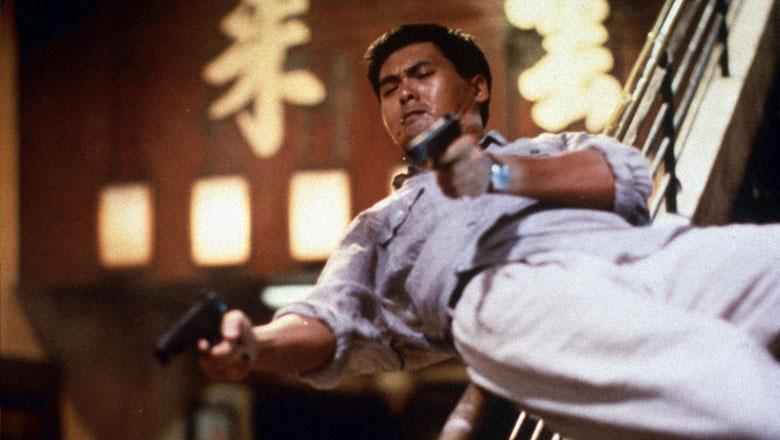Credits
Feature by: Rumsey Taylor, Cullen Gallagher, Leo Goldsmith, David Carter, and Glenn Heath Jr.
Posted on: 19 July 2012
In a John Woo movie there’s a moment in which the dialogue, which has heretofore reached a boiling point between characters on opposite sides of the law, ceases, and is promptly supplanted by the sound of ricocheting bullets and explosions. Woo has become so known – appropriately so – for his visual signatures that is important to note, in our survey of his work in the Hong Kong action genre, that his aesthetic is more robust and considered than what a cursory pass may reveal.
Watching these scenes without regard to their visual component, they sound to be incomprehensibly chaotic. But visually they are adeptly staged in camerawork that moves about a shootout, say, with such poise that the organization of the storytelling sharply contrasts its chaos. The rhythm of these scenes is broken by moments of emphatic slow-motion and closeup inserts, building to crescendo: typically, a climax between the good and bad.
Prior to his breakout in the mid-1980s, Woo had made over a dozen features, some of them with respectable box office returns. (One of these, it is often noted, features Jackie Chan’s debut performance.) His first outright action picture, Heroes Shed No Tears, came in 1986, and was soon followed by his blockbuster collaboration with producer Tsui Hark, A Better Tomorrow. In the years hence he would helm six others in a concentrated string of work that has come to define Hong Kong action cinema—a term with which Woo’s name is essentially synonymous.
In a larger sense, and despite his many directorial trademarks, Woo may be posited as an amalgamation of arthouse influences. Unlike close contemporaries like Ringo Lam, whose work regularly reworks the tropes of the 1980s Hollywood action epic, Woo regularly employs notions of moral ambiguity closer to those entertained by Akira Kurosawa in his samurai epics, and frequently cites the nuanced neo-noir in the French films of Jules Dassin and Jean-Pierre Melville as a blueprint for his particular take on the plight of embattled masculinity. Chow Yun-fat, his principal avatar for this theme, effects a canny amalgam of classic-cool male gestures, attributes, and haberdashery: a surly smirk, an insouciant toothpick, an arched eyebrow, a flaring trenchcoat. Within Hong Kong’s amoral urban universe, Chow’s charming and consummately tragic anti-heroes always strike the pose of the romantic loner. But their existence is more often than not determined by the presence of a foil, a doppelganger, a brother: a frenemy with and/or against whom he must fight to the death. This intensely ambiguous relationship – carried over into Woo’s Hollywood career in Face/Off – forms the nexus of love and hate within the director’s work, driving not only the films’ kinetic action sequences, but also their erotic charge. While Woo has occasionally denied this, it’s evident that these homosocial expressions of palling around, broing out, and having each other’s back take priority over any of the heterosexual romantic MacGuffins he perfunctorily inserts into his films.
This is but the subtext of a John Woo action movie, however, and is entirely subordinate to the operatic chaos he so deftly orchestrates. This chaos is told in throngs of bullets, with so many expendables that their moral affiliation becomes indiscriminate, and all the while Woo’s camera moves about the setting so fluidly that one is pulled into its epicenter. It is this determined proximity to chaos that is, perhaps, the defining feature of Woo’s body of work.
His critical repute at its apex, and his films proven financial successes, Woo emigrated to the United States in 1993, fleeing the handover of Hong Kong to the People’s Republic of China, an event which looms forebodingly over so many of his films. In Hollywood, his work would invite larger audiences even if the basic integrity of his work – its stylistic consistency and rigor – would be compromised. His first English-language film, Hard Target, met a studio resistance he was unfamiliar with, and henceforth his work would example moments of his characteristic style even if it lacks the overall fashion. He would return to filmmaking on his home turf in 2008 with Red Cliff, a feudal epic in the vein of Kurosawa, starring Tony Leung. But this film represents less a return to form than an extension of the expansive – and expensive – approach to filmmaking Woo refined in Hollywood, an everything-but-the-kitchen-sink cinema of multiple megastars and indulgent CG spectacle. It’s the work of a filmmaker always trying to outdo himself, even at the risk of overdoing it.
Even if this passion for excess has attenuated the power of Woo’s cinema in recent years, it’s this very bombastic, overreaching quality that one admires so much in his early Hong Kong successes. Beginning this coming Monday, we will be revisiting this ambitious period in Woo’s career, posting reviews of Woo’s Hong Kong action movies in anticipation of our screening of two of them: 1986’s Heroes Shed No Tears and 1992’s Hard Boiled at 92YTribeca.
Introduction by Rumsey Taylor and Leo Goldsmith
By Rumsey Taylor, Cullen Gallagher, Leo Goldsmith, David Carter, and Glenn Heath Jr. ©2012 NotComing.com
Reviews
-
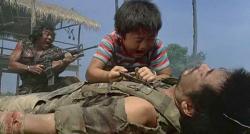
Heroes Shed No Tears
1986 -
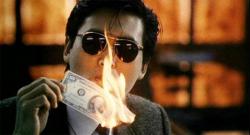
A Better Tomorrow
1986 -
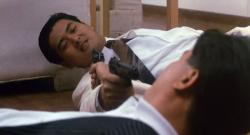
The Killer
1989 -
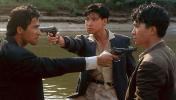
Bullet in the Head
1990 -
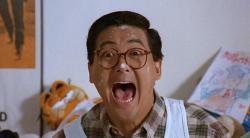
Once a Thief
1991 -
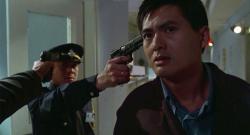
Hard Boiled
1992
We don’t do comments anymore, but you may contact us here or find us on Twitter or Facebook.



